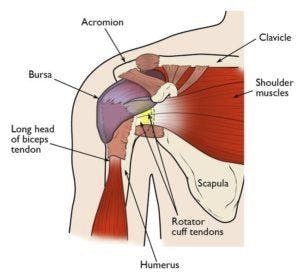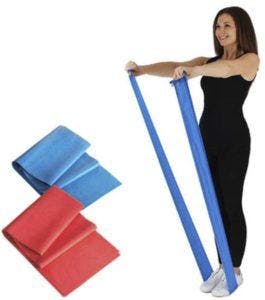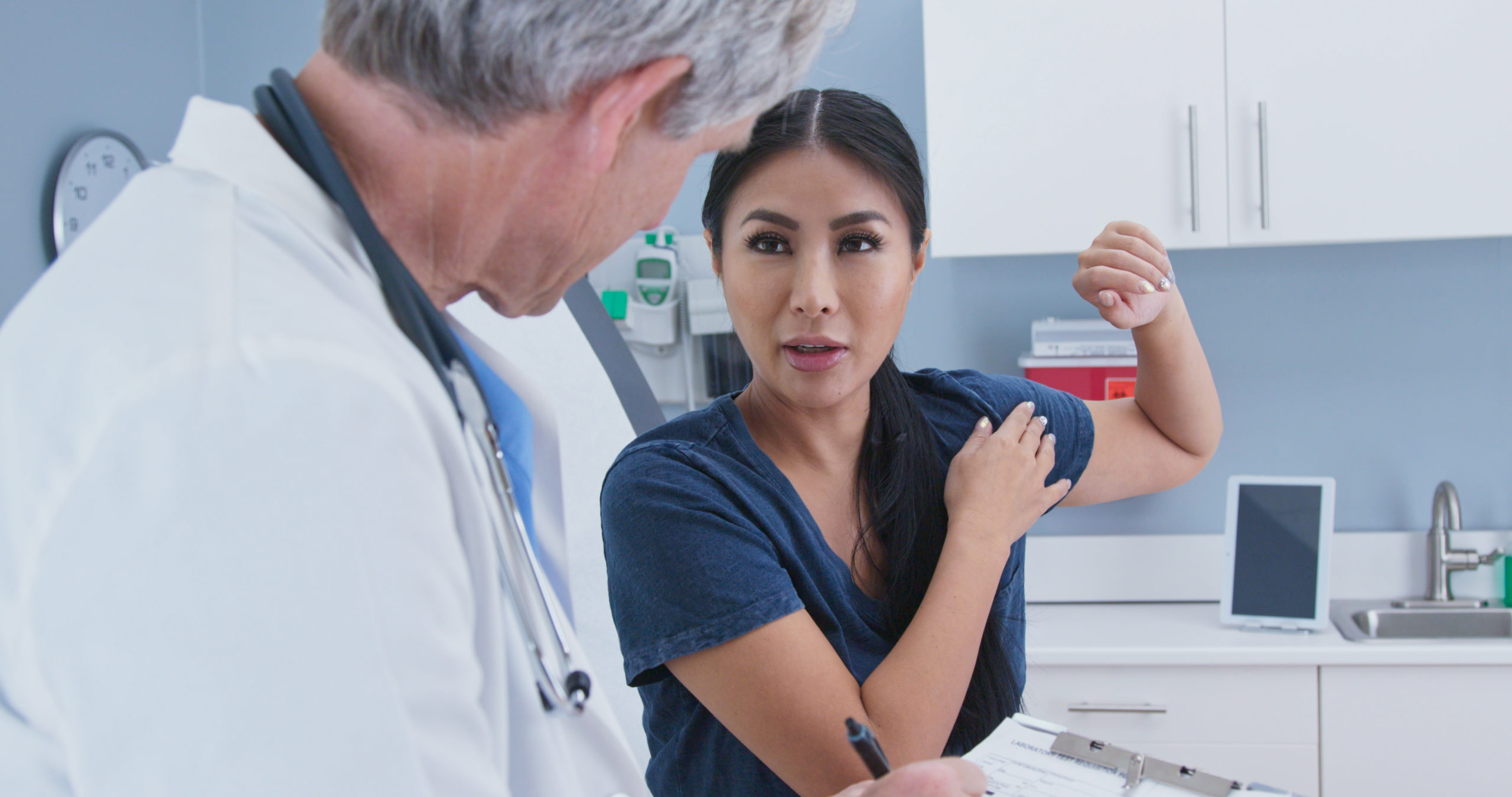Many people assume if they incur a shoulder/rotator cuff injury that it automatically means their injury will require surgery, but that is not necessarily the case. In many cases, other non-surgical treatments like physical therapy can help patients avoid surgery by using specific stretching and strengthening exercises. When administered by a physical therapist, these exercises can stretch tight muscles, help promote the proper range of motion in the arm and shoulder area, along with gradually strengthening muscles surrounding the shoulder area so that all of the shoulder components maintain their health and ability to perform certain tasks.
Rotator Cuff Definition and Injuries
Surrounding the shoulder joint is a group of tendons and muscles. This group is called the rotator cuff and they provide the support necessary to keep the top of the arm bone firmly in the socket area of each shoulder.
There are several reasons why the rotator cuff area may become injured. Beyond traumatic injuries such as vehicle accidents and sports injuries, the most common causes of rotator cuff injuries stems from individuals who routinely perform physical tasks that require them to keep their arm(s) lifted. Painters, carpenters, and others in the construction industry often end up with rotator cuff injuries due to the nature of the work. Age is another factor that plays into developing rotator cuff injuries, most likely due to a sedentary lifestyle that weakens muscles over time.
Sometimes simple inflammation will occur in the shoulder, but in other cases, an actual tear occurs in a muscle. Whether or not surgery is required, depends upon the severity of the tear. Anyone with a rotator cuff injury should receive an accurate diagnosis from their physician. In many cases, the doctor will prescribe a series of physical therapy treatments, which will allow the individual can regain the full use of their shoulder.

10 Theraband Exercises for the Rotator Cuff
- External rotation @ 0 degrees of abduction – This exercise requires the patient to hold the Theraband at waist height with the hand of their injured arm, forearm across their waist. The next step is to rotate the forearm 90 degrees so the hand is pointing outward, then return the forearm back to its neutral position. This strengthens the muscles attached to the shoulder blade including the infraspinatus, teres minor, and the supraspinatus.
- Internal Rotation @ 0 degrees of abduction – Once again the patient will hold the band at waist level, only this time the starting position is with the hand in front at a 90-degree angle to the body. Rotate the arm inward until the forearm is resting at the waist, then slowly return the forearm to 90 degrees. This strengthens the internal rotator cuff muscles including the iliac crest and the latissimus dorsi.
- External rotation @ 90 degrees abduction – To start, lift the affected arm to the side until the elbow reaches shoulder height. Extend the hand forward to grasp the band placed at about shoulder height and lift it up until the hand is pointing to the ceiling. Then come slowly come back to starting position. Do not rotate the hand at all throughout the motion. This is another exercise to strengthen the infraspinatus and teres minor.
- Internal rotation @ 90 deg abduction – In this exercise, the patient will actually stand with the band behind them. Place the resistance band handle in the hand, with the hand pointed to the ceiling. The elbow should be at shoulder height. Move the hand forward until it is facing forward, then slowly lift it back up until it is facing the ceiling again. This will strengthen the pectoralis major, the deltoid in the arm and the rotator cuff.
- PNF D2 Flexion Pattern – In this exercise, the band is positioned at hip height on the opposite side of the affected arm. Cross the affected arm over the body and grasp the resistance band. Slowly bring it across the body and lift the arm up in the air at a diagonal. This exercise strengthens the posterior (back) of the shoulder and the deltoid in the arm.
- PNF D2 Extension Pattern – Similar to the D2 flexion pattern, this exercise begins with the Theraband positioned high enough so the patient can grasp the band handle while their affected arm is fully extended upward. The next step is to slowly bring the handle down and across the body, then return to starting position. This exercise focuses on the muscles on the posterior side of the shoulder.
- Rows with elbows flexed to 90 degrees – With the Theraband positioned at waist height, stand far enough back from the band to start with the arms fully extended. Grasp the handles and pull until the elbow are just slightly behind the waist, then return slowly to starting position. The muscles strengthened in this exercise are the rhomboids and middle trapezius.
- Shoulder extension with elbows @ 0 degrees – Face the band positioned at a height where the arm can be fully extended. Without bending the elbow, slowly pull down the arm until the hand is resting comfortably by the side of the body, then return the arm to the starting position. The deltoid, latissimus dorsi, and middle trapezius are the muscles strengthened in this exercise.
- Punch out exercise for serratus anterior strengthening – Place the resistance band around the mid-back area and grasp the band on each side. In a slow punching motion, bring the band forward as far as one can reach, then slowly come back to starting position. This exercise helps to stabilize the scapula area by strengthening the serratus anterior muscle.
- Shoulder scaption – Stand on the resistance band on the affected side. Grasp the band and pull it up and slightly forward, then slowly return to starting position. This exercise strengthens the supraspinatus and deltoid muscles, along with the rotator cuff area.

Want to know more about physical therapy for rotator cuff and other shoulder injuries or need a piece of Theraband? Stop at Hess Physical Therapy and schedule an evaluation with one of our doctors today!
Our locations:
- Kennedy: (412)-771-1055
- Crafton: (412)-458-3445
- Allison Park: (412)-487-2787
- Bethel Park: (412) 835-2626
- Atlasburg: (724) 947-9999
Website: www.hesspt.com
Disclaimer: this information is "not medical advice" and is used at the site visitor's own risk.
